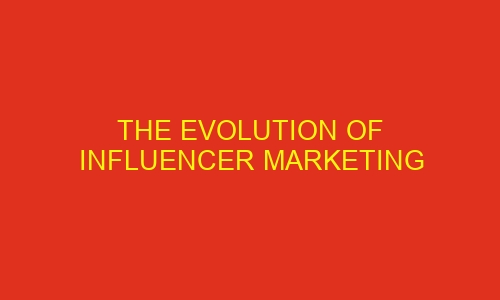Influencer marketing has evolved from a fad marketing trend into a long-term social media marketing strategy. The rise of social media platforms meant brands could reach more audiences at one time, and even more through influencer marketing. If you’re wondering how you can implement an influencer strategy into your marketing efforts, reach out to an influencer marketing agency.
But let’s get into the history of influencer marketing.
Before influencer marketing became what it is today, we had celebrity endorsements. Celebs were the original influencer. They were real people with real preferences, just with a mass following due to their fame. Due to the novelty of celebrity endorsement and mass following, celebrities had the ability to convince consumers to buy products they endorsed, simply by saying they liked them. But, when these celebrity endorsements became an overused channel, consumers began to lose trust and interest in celebrity-backed brands.
Enter social media
With the rise of the “original” social media platforms like Facebook, Instagram, Twitter and YouTube, everyone jumped at the opportunity to share their everyday lives online. Obviously, famous celebrities, reality stars and bloggers gained followers on social media quickly due to their existing popularity. However, it is also here that we saw the rise in a handful of “normal” people accumulating large followings due to their engaging, relatable content and close interactions with their followers.
Due to their ability to influence the decisions of their audiences, these people became known as influencers. When compared to celebrities and reality stars, influencers were very similar to regular social media users. Most didn’t own mansions or fly on private jets, and shared relatable content about the good and bad sides of their lives. They were consistently authentic, which earned them a high level of trust and authority with their followers.
This was the beginning of influencer marketing as we know it today.
Since then, the influencer marketing landscape has changed. The original influencers (think Zoella, Jeffree Star, Tanya Burr etc) grew to celebrity stardom, meaning many became hard to relate to and untrustworthy due to too many brand partnerships. This paved the way for nano, micro and macro-influencers. These influencers still had reasonable followings but also had a relatable influence over their followers.
The impact of influencer marketing became significant when ad-blocking software became readily available. With many consumers using ad-blockers, influencers provided a way for brands to reach audiences natively within social platforms.
This takes us to the influencer marketing of today, where influencers are used to humanise brands. Influencers have spent time crafting their own tone of voice that their audiences respond well to. Brands can partner with influencers that have similar values and interests to their industry, and trust influencers to create great content that resonates with their audience but still portrays a brand in a relevant way.
In some cases, influencers are now being chosen to act as brand ambassadors due to their status. Influencer audiences are incredibly loyal and engaged, so if an influencer is associated with a brand, their audience will take note.
Influencer marketing is booming, but it is still set to grow. If your brand hasn’t considered influencer marketing before, it absolutely should now.

